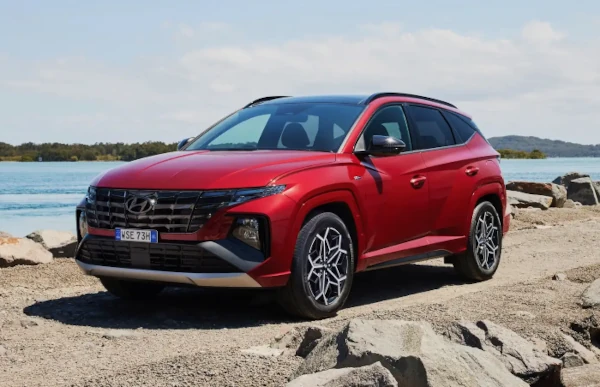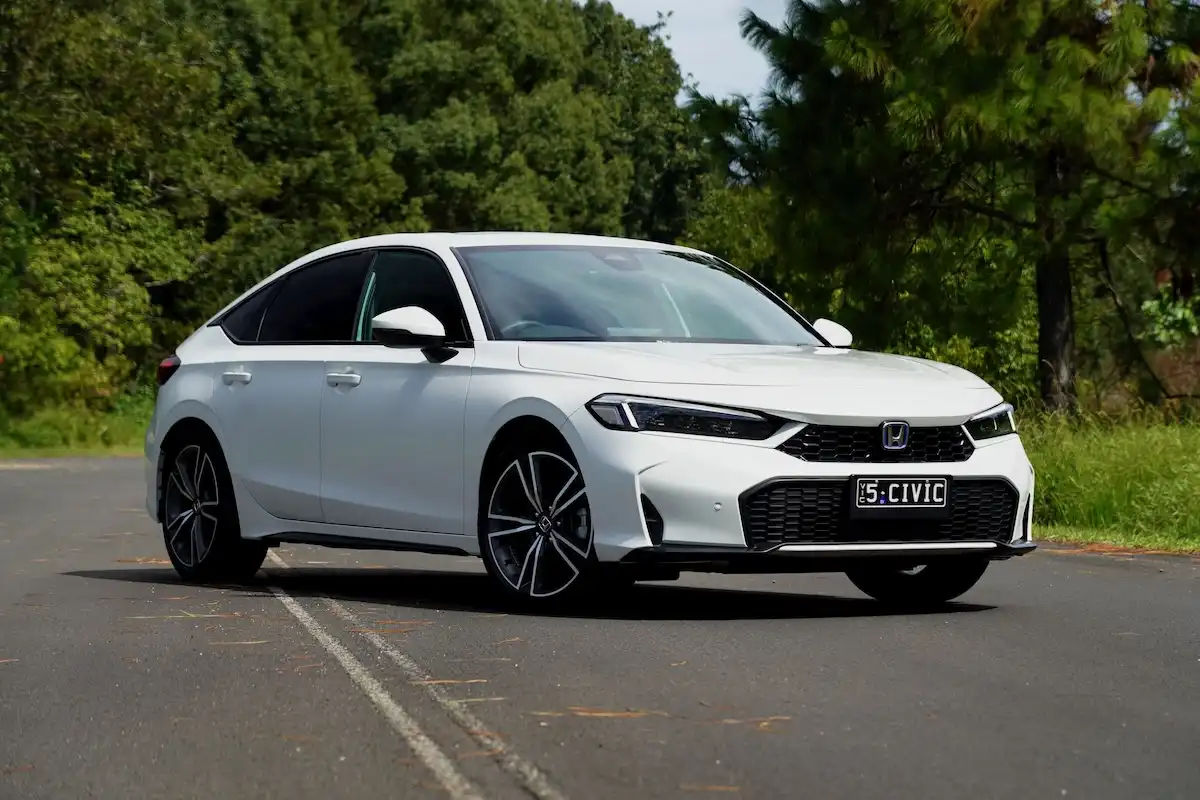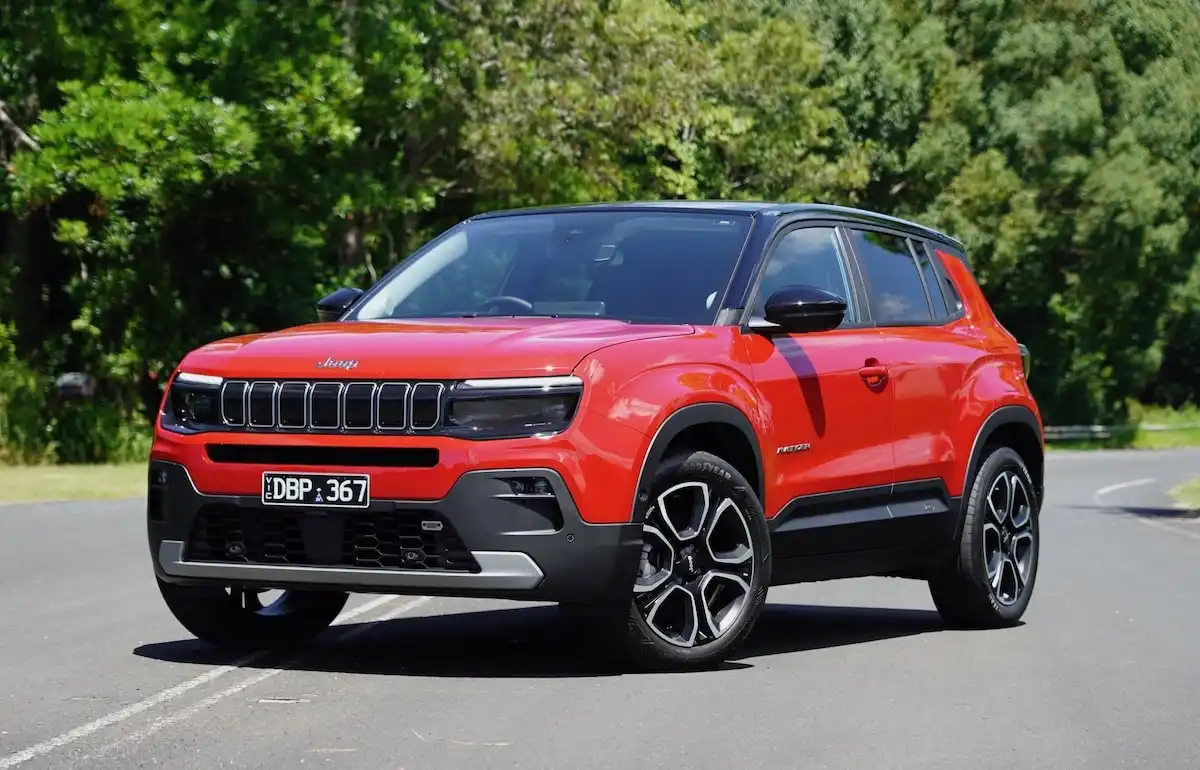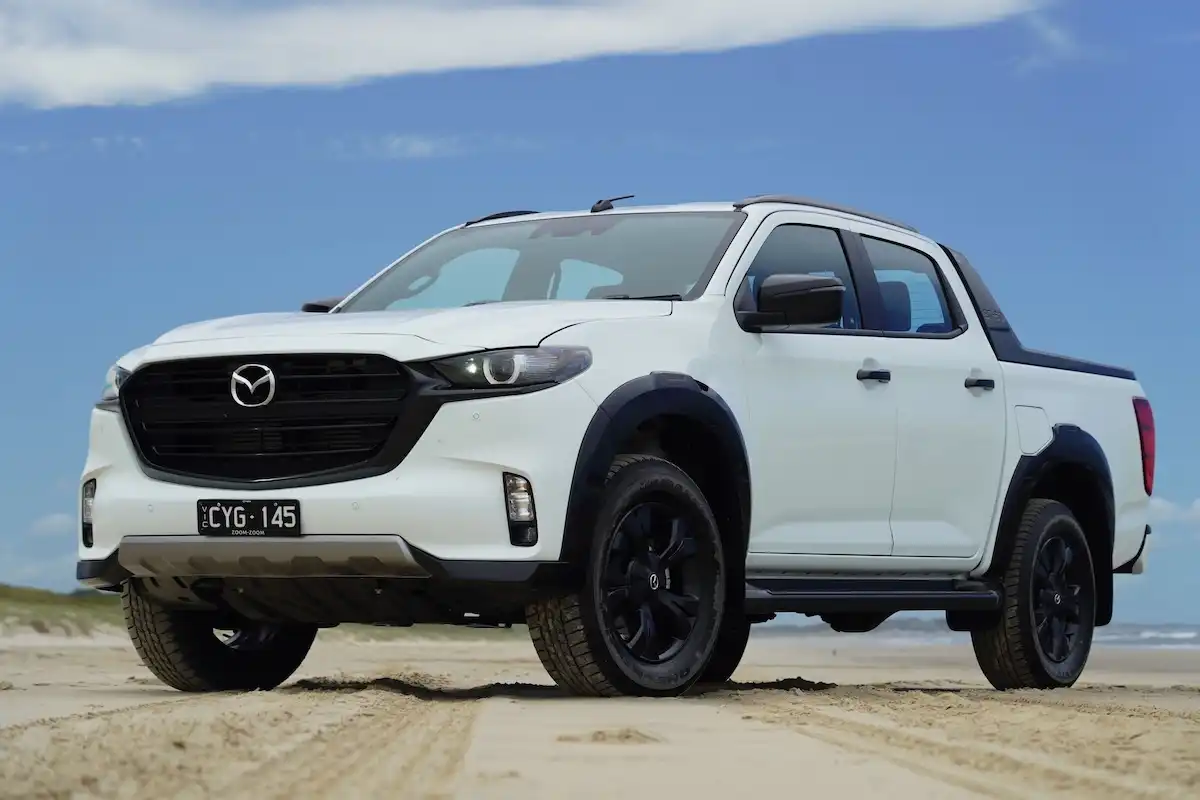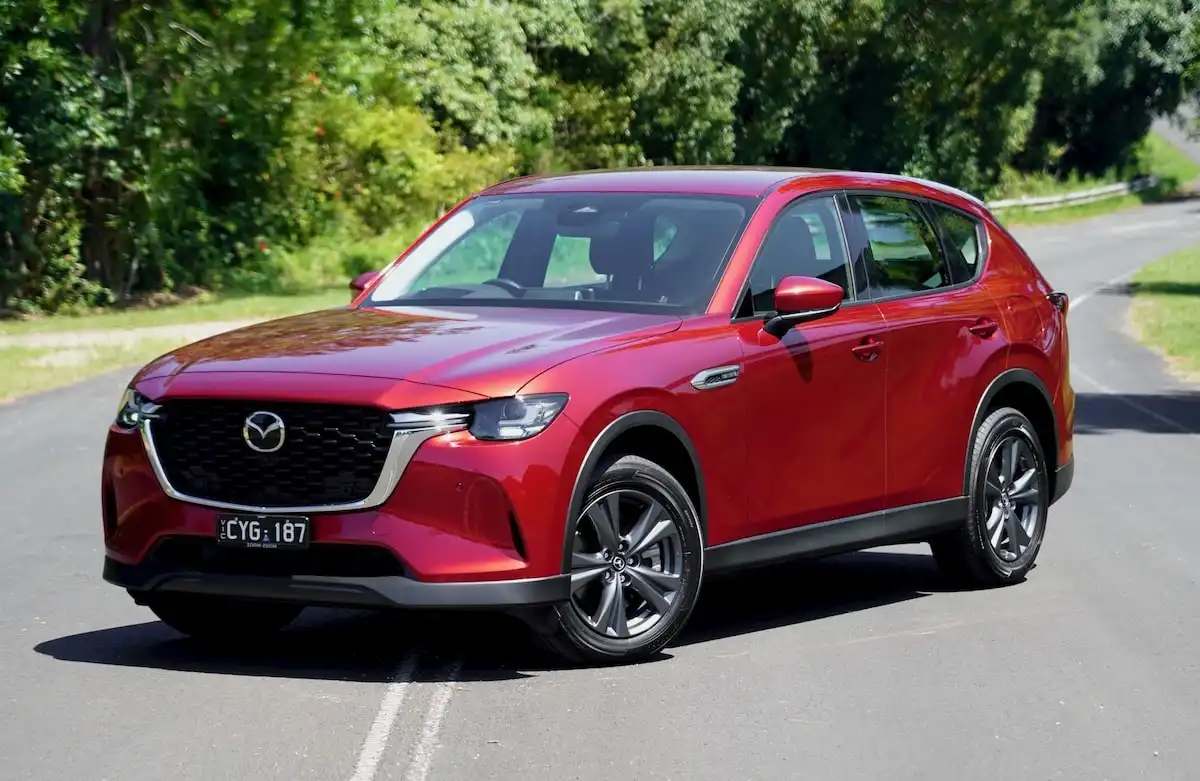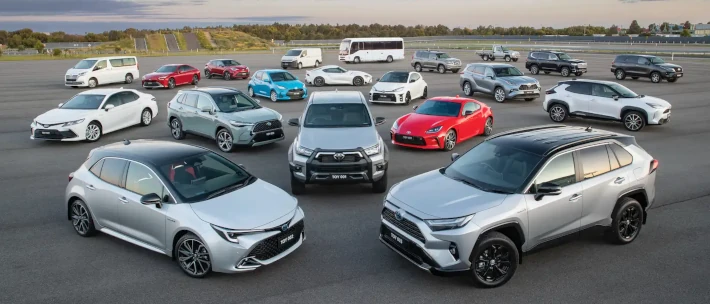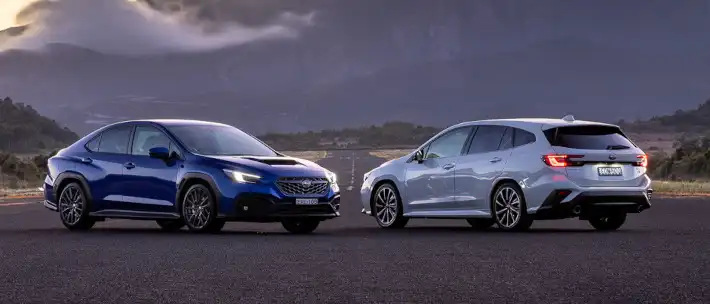For years now, the Tucson has held its own against the best in the midsize SUV business, representing one of the most family-friendly packages with a heap of variety within the range.
The Tucson is set to be upgraded in the middle of 2024, which begs the question of whether you’re better off pouncing now before prices likely rise or waiting for the update.
Let’s take a closer look to find out.
Hyundai Tucson Competition
Hyundai Tucson |
VS |
Toyota RAV4 |
| Mazda CX-5 | ||
| Kia Sportage | ||
| Honda CR-V | ||
| Mitsubishi Outlander | ||
| Subaru Forester | ||
| Haval H6 |
Starting Price: $35,150
OnlineAuto Savings: Enquire now
How Much Does It Cost?
Prices for the Hyundai Tucson range kick off from $35,150 for the entry-level Tucson 2.0 FWD, rising up to $40,150 for the Tucson Elite 2.0 FWD, $44,150 for the Tucson Elite 1.6T AWD and up to $46,150 for the Tucson Elite 2.0 Diesel AWD.
From here, the range moves to the Tucson Highlander which is priced at $47,150 for the Highlander 2.0 FWD, up to $51,150 for the Highlander 1.6T AWD and $53,150 for the range-topping Highlander 2.0 Diesel AWD.
Keep in mind that these prices are subject to change and do not include on-road costs.
How Much Can OnlineAuto Save You?
Using OnlineAuto’s car buying service, you could save by letting one of our car specialists help you find the best value model for you.
Hyundai Tucson - HIGHLANDER N LINE (FWD) Specifications
| Model Date | 2023 |
| Make | HYUNDAI |
| Model | TUCSON |
| Series | NX4.V2 MY23 |
| Variant | HIGHLANDER N LINE (FWD) |
| Body | 4D WAGON |
| Fuel type | UNLEADED PETROL |
| Transmission | 6 SP AUTOMATIC |
| Drive | FWD |
| Engine | MPFI |
| Engine capacity | 1999 |
| Engine configuration | DUAL OVERHEAD CAM / 16 valves |
| Engine RPM | 6200 / 4500 |
| Cylinders | 4 |
| Torque | 192 |
| KW | 115 |
| Fuel tank size | 54.0 |
| Fuel usage specs | 8.1 / 0 |
| CO2 | 184 |
| ANCAP security rating | 5 |
Get in touch with one of our Car Buying Specialists today.
Request a quoteWhat Features Does the Hyundai Tucson Have?
Hyundai’s entry-level Tucson comes riding on 17-inch alloys and picks up halogen headlights with LED daytime running lamps and indicators, adaptive cruise control, a rear-view camera with rear parking sensors, cloth upholstery with a leather-wrapped steering wheel and gear lever, roof rails, a wireless charging pad and an 8.0-inch infotainment system with wireless Apple CarPlay & Android Auto.
Stepping up to the Tucson Elite range adds a set of 18-inch alloys, dual-zone climate control, keyless entry & start, leather upholstery with power-adjustable and heated front seats, front parking sensors, a 10.25-inch infotainment display and remote start function.
Finally, the range-topping Tucson Highlander receives 19-inch alloys with LED head & tail lights, a powered boot lift, a surround-view monitor, heated rear seats, ventilated front seats, LED ambient lighting, upgraded leather upholstery, a 10.25-inch digital instrument cluster, a panoramic sunroof and upgraded Bose sound system.



Hyundai Tucson Range Features:
-
17-inch alloys
-
Halogen headlights with LED daytime running lamps & indicators
-
Adaptive cruise control
-
Rear-view camera with rear parking sensors
-
Cloth upholstery with leather-wrapped steering wheel
-
Roof rails
-
Wireless smartphone charging
-
8.0-inch infotainment system with wireless Apple CarPlay & Android Auto
-
18-inch alloys (Elite)
-
Leather upholstery (Elite)
-
10.25-inch infotainment display (Elite)
-
19-inch alloys (Highlander)
-
LED head & tail lights (Highlander)
-
Powered boot lift (Highlander)
-
Surround-view monitor (Highlander)
-
Panoramic sunroof (Highlander)
Is the Hyundai Tucson Comfortable to Drive?
When it comes to the driving experience, the Hyundai Tucson is a very impressive package.
The base model picks up a 2.0-litre four-cylinder petrol pushing out 115kW of power and 192Nm of torque, with power sent to the front wheels via a six-speed automatic.
Step higher up the range and you’ll pick up a 1.6-litre turbocharged four-cylinder petrol pushing out 132kW of power and 265Nm of torque, an all-wheel drive system working alongside a seven-speed dual-clutch transmission.
The range-topping 2.0D offers a 2.0-litre turbo-diesel that kicks out 137kW of power and 416Nm of torque to all four wheels via the all-wheel-drive system and an eight-speed automatic.
Performance from the base engine is nothing to get excited about, though upgrading to either of the turbo diesel or turbo petrol variants adds a spring to the Tucson’s step, making it a worthwhile investment for added acceleration and towing power.
On a mix of Australian roads, the Tucson feels stable and confident, even more so in the premium all-wheel-drive variants, though the base model performs remarkably well on everything from smooth city streets to rougher country B-roads.
Around town, the Tucson is remarkably well-behaved and easy to drive, feeling nimble on its feet and remaining easy to park and move at low speeds thanks to its lightweight steering rack.
While it doesn’t pick up the same bespoke Australian suspension hardware that its twin, the Kia Sportage has been gifted with, it remains sure-footed and confident when driving up a windy road.
Head back to smooth city streets and the Tucson’s suspension package can eat up small to moderate bumps without an issue, making for an impressive all-around midsize SUV package.
Which is the Most Fuel Efficient Hyundai Tucson Engine?
Hyundai’s base model powered by the 2.0-litre petrol engine returns combined cycle fuel economy figures of 8.1L/100km.
These figures drop down to 7.2L/100km in the 1.6T and down once again in the 2.0D turbo-diesel which consumes 6.3L/100km on a combined cycle.
-
2.0-litre petrol: 8.1L/100km
-
1.6-litre turbo petrol: 7.2L/100km
-
2.0-litre turbo-diesel: 6.3L/100km
Is it Practical and Spacious?
Space and practicality are arguably two of the most important demands from buyers looking at their options in the midsize SUV segment, and in this respect, the Tucson remains a strong contender.
In the front of the cabin, there’s an excellent driving position with a tonne of adjustment and great visibility to get comfortable with your surroundings.
Headroom in the front of the Tucson’s cabin is impressive, too, with no problem swallowing up even the tallest of drivers while adding to the sense of space inside the cabin.
The cabin layout is clean, with a large centre console housing a pair of cupholders, a clever design offering access to storage inside the console from either side of the cabin, added storage inside the folding armrest and a decent-sized storage tray behind the gear buttons.
All up, there’s a large number of storage options in the front of the Tucson’s cabin that makes it a very family-friendly midsize SUV package.
Move to the rear and things are equally as impressive, with a heap of leg and headroom on offer for tall rear passengers and a perfect place for kids to get comfortable on longer journeys.
The rear of the Tucson’s cabin offers a pair of ISOFIX anchors and top tether mounts, while the boot measures in at a very healthy 539L and offers a convenient means of capitalising on the 1860L of cargo storage for bulky gear and sports equipment.
Is it Safe?
The Hyundai Tucson has been awarded a five-star ANCAP safety rating, you can find its scores below.
-
Adult Occupant Protection: 86%
-
Child Occupant Protection: 87%
-
Vulnerable Road User Protection: 66%
-
Safety Assist: 66%
As standard, the Hyundai Tucson is packaged with autonomous emergency braking with pedestrian, cyclist and junction assist, adaptive cruise control, blind-spot monitoring, rear cross-traffic alerts, lane-keep assist, a rear-view camera with rear parking sensors, lead vehicle departure alerts and tyre pressure monitoring.
Stepping up to the range-topping Tucson Highlander adds a surround-view monitor, rear autonomous emergency braking, front parking sensors and rear occupant alerts.
Our Verdict: Is the Hyundai Tucson Worth it?
While it might compete in one of the hottest segments on the market, the Hyundai Tucson confidently asserts itself as one of the best family-friendly midsize SUV packages currently on sale.
Even with a significantly updated Tucson on the horizon for mid-2024, the current Tucson demands attention from family buyers and offers a heap of value within the range for growing Aussie families.
If you’re in the market for a new car, be sure to reach out to one of our car-buying experts who can help find you the best possible price on your dream car.
Five Specs You Need to Know
-
Five-year/unlimited-kilometre warranty
-
12-month/15,000 service intervals drop to 10,000km in turbo petrol variant
-
Five-star ANCAP safety rating
-
Three engines available
-
539L boot expands to 1860L with rear seats folded
Get in touch with one of our Car Buying Specialists today.
Request a quote